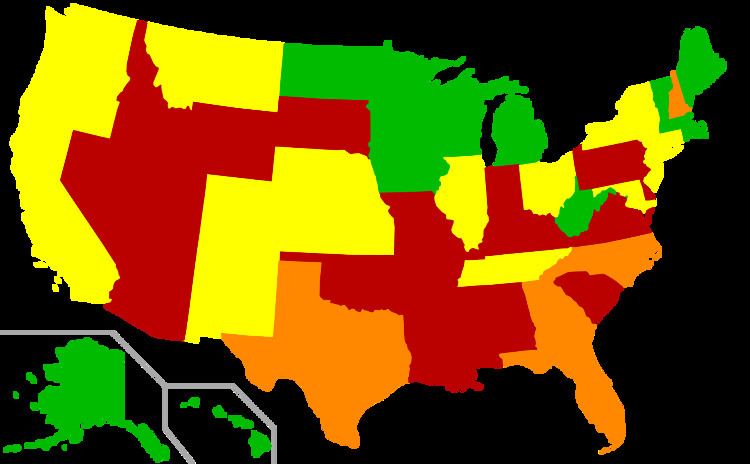 | ||
Capital punishment for juveniles in the United States existed until March 1, 2005, when the U.S. Supreme Court banned it in Roper v. Simmons.
Contents
Pre-Furman history
Since 1642, (in the Thirteen Colonies, the United States under the Articles of Confederation, and the current United States), an estimated 364 juvenile offenders have been put to death by states and the federal government.
The youngest person to be executed in the 20th century was George Stinney, electrocuted in South Carolina at the age of 14 on June 16, 1944. The youngest person ever to be sentenced to death in the United States was James Arcene, a Native American, for his role in a robbery and murder committed when he was ten years old. He was, however, 23 years old when he was actually executed on June 18, 1885. The last execution of a juvenile was convicted murderer Leonard Shockley, who died in the Maryland gas chamber on April 10, 1959, at the age of 17. No one has been under the age of 19 at the time of execution since at least 1964.
Post-Furman history
Since the reinstatement of the death penalty in 1976, 22 people have been executed for crimes committed while they were under the age of 18. All of the 22 executed individuals were males. Twenty-one of them were age 17 when the crime occurred; one, Sean Sellers (executed on February 4, 1999, in Oklahoma), was 16 years old when he murdered his mother, stepfather, and a store clerk.
Due to the slow process of appeals since 1976, none was actually under the age of 18 at the time of execution.
In Thompson v. Oklahoma (1988), the U.S. Supreme Court first held unconstitutional imposition of the death penalty for crime committed aged 15 or younger.
But in the 1989 case Stanford v. Kentucky, it upheld capital punishment for crimes committed aged 16 or 17. Justice Scalia's plurality part of his opinion famously criticized Justice Brennan’s dissent by accusing it to "replace judges of the law with a committee of philosopher-kings".
Justice O’Connor was the key vote in both cases, being the lone justice to concur in the two.
Sixteen years later, Roper v. Simmons overruled Stanford. Justice Kennedy, who concurred to Scalia’s opinion in Stanford, instead wrote the opinion of the court in Roper and became the key vote. Justice O’Connor dissented.
Before 2005, of the 38 U.S. states that allow capital punishment:
At the time of the Roper v. Simmons decision, there were 71 juvenile offenders awaiting execution on death row: 13 in Alabama; four in Arizona; three in Florida; two in Georgia; four in Louisiana; five in Mississippi; one in Nevada; four in North Carolina; two in Pennsylvania; three in South Carolina; 29 in Texas; and one in Virginia. Detailed summaries of each of these offenders can be found here.
